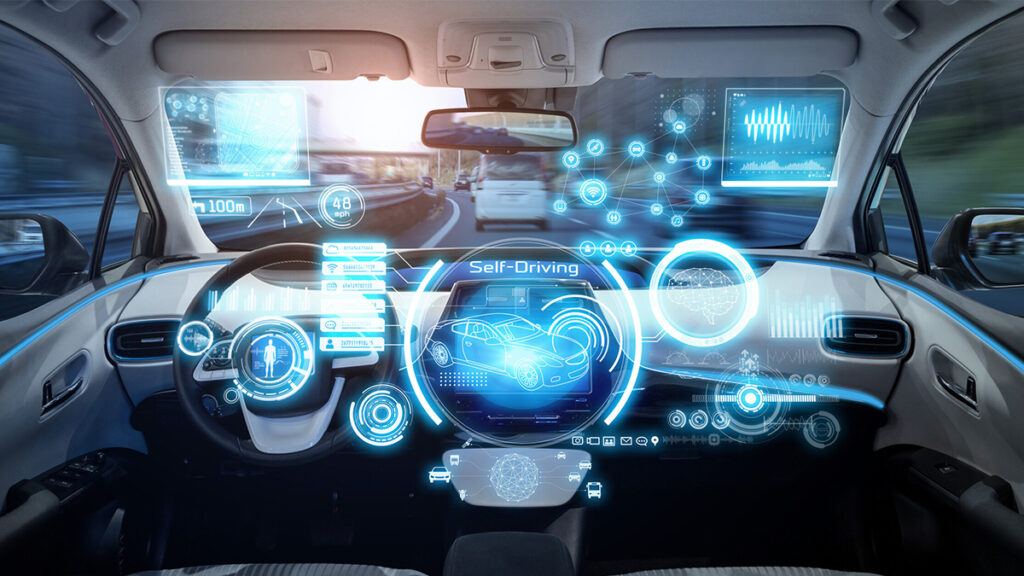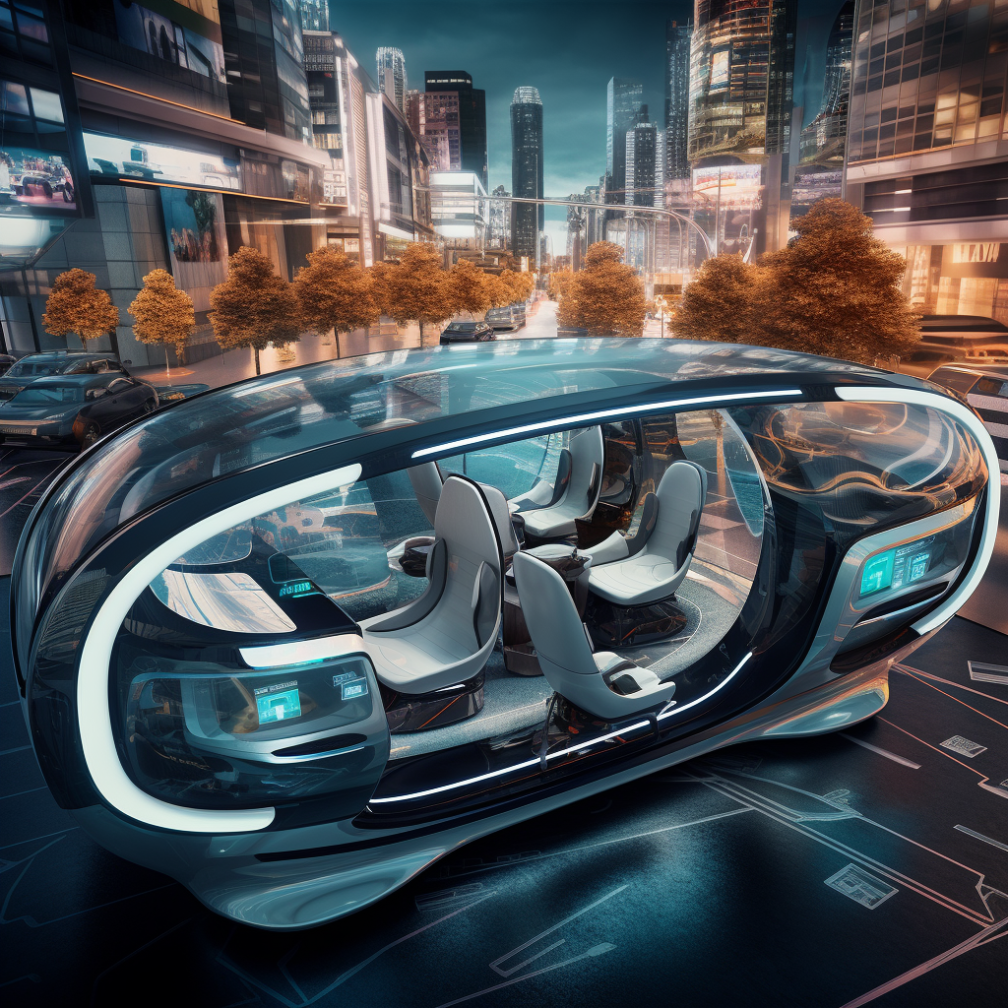Translation Tools Trend ai, AI Creativity, AI Technology, AI Trends 2024, Artificial Intelligence, autonomous vehicles, computer vision, Future of AI, Machine Learning, mobility, Natural Language Processing, OpenAI, road safety, self-driving cars, sensor fusion, smart cities, transportation innovation AiTrendLine
The Future of AI in Autonomous Vehicles
Artificial Intelligence (AI) is revolutionizing many industries, especially the automotive sector. Autonomous vehicles, or self-driving cars, rely on AI to navigate, make decisions, and interact with their environment. This technology isn’t just an advancement—it’s transforming how we perceive transportation. While AI brings opportunities like improved road safety and reduced congestion, it also presents challenges in regulation, ethics, and society.
As AI continues to evolve, the future of autonomous vehicles looks promising. In this post, we will explore how AI is driving this change, the key technologies involved, and the broader implications.
Key Technologies Powering AI in Autonomous Vehicles
1. Machine Learning and Deep Learning
Machine learning (ML) and deep learning (DL) are at the heart of AI in autonomous vehicles. These algorithms help vehicles learn from vast amounts of data, recognize patterns, and make real-time decisions. For instance, deep learning is particularly vital for tasks like object detection, lane recognition, and understanding traffic signs. Through neural networks, DL models process inputs from cameras, radar, and LiDAR sensors to perceive the environment.
2. Computer Vision
Another critical technology is computer vision, which allows autonomous vehicles to “see” and interpret their surroundings. By using cameras and sensors, vehicles gather visual data. AI algorithms then process this data to identify pedestrians, vehicles, traffic signs, and obstacles. Consequently, advanced computer vision systems are essential for tasks like lane-keeping, collision avoidance, and parking assistance.

3. Sensor Fusion
Furthermore, sensor fusion combines data from various sensors to create a comprehensive view of the vehicle’s environment. By integrating inputs from cameras, radar, LiDAR, and ultrasonic sensors, AI systems can make more accurate decisions. Therefore, this technology is crucial for autonomous vehicles to operate effectively in diverse conditions, such as low visibility or crowded areas.
4. Natural Language Processing (NLP)
Natural Language Processing (NLP) also plays a significant role in autonomous vehicles. NLP enables vehicles to understand and respond to voice commands from passengers. Additionally, it facilitates communication with other vehicles and infrastructure, such as traffic signals. As NLP technology advances, it will enhance user experience, making interactions with autonomous vehicles more intuitive.
The Role of AI in Enhancing Safety
1. Accident Prevention
One of the most significant benefits of AI in autonomous vehicles is its potential to prevent accidents. AI systems continuously monitor the environment for hazards and can react faster than human drivers. For example, an AI-driven vehicle can detect a pedestrian stepping onto the road and apply the brakes almost instantly. As a result, these systems can prevent many accidents that would occur due to human error.
2. Adaptive Cruise Control and Lane Keeping
In addition, AI enhances traditional driver-assistance systems, making them more responsive and accurate. Adaptive cruise control, for instance, uses AI to maintain a safe distance from other vehicles, adjusting speed as needed. Similarly, lane-keeping systems ensure the vehicle stays within its lane, even in complex driving scenarios. Therefore, these AI-powered systems contribute significantly to safer driving experiences.
3. Risk Mitigation
Moreover, AI can predict potential accidents by analyzing real-time data and historical driving patterns. By understanding the likelihood of a collision, AI systems can adjust driving behavior to reduce risks. Consequently, risk mitigation is another area where AI can make a substantial impact on road safety.
Challenges and Ethical Considerations
1. Regulatory and Legal Issues
Despite the benefits, autonomous vehicles face a complex legal environment. Regulations on liability, insurance, and safety are still evolving. For example, questions about responsibility in accidents involving autonomous vehicles remain unresolved. As a result, governments and technology companies must work together to develop a regulatory framework that ensures safety and accountability.

2. Ethical Dilemmas
Ethical dilemmas also arise in the context of autonomous vehicles. These vehicles may encounter situations requiring ethical decisions, such as choosing between two undesirable outcomes. Developing AI systems that align with societal values is a significant challenge. Therefore, collaboration with ethicists, policymakers, and the public is essential to navigate these issues.
3. Cybersecurity Risks
Additionally, as autonomous vehicles become more connected, they are increasingly vulnerable to cyberattacks. Ensuring the security of AI systems is critical to prevent hackers from taking control of a vehicle or accessing sensitive data. Consequently, ongoing cybersecurity research and development will be necessary to protect these vehicles from evolving threats.
The Future Impact of AI in Autonomous Vehicles
1. Smart Cities
Looking ahead, autonomous vehicles will be integral to smart cities, where transportation systems connect with intelligent infrastructure. For example, AI will allow vehicles to communicate with city infrastructure, optimizing traffic flow and reducing congestion. Thus, the future of urban transportation will likely be shaped by AI-powered smart systems.
2. Environmental Benefits
Moreover, AI in autonomous vehicles can contribute to environmental sustainability. By optimizing driving patterns and reducing traffic congestion, AI can lower fuel consumption and emissions. Additionally, the rise of autonomous electric vehicles could further minimize transportation’s environmental impact.
3. Mobility for All
Lastly, autonomous vehicles can improve accessibility for individuals who can’t drive, such as the elderly or disabled. AI-driven vehicles offer greater independence and mobility, enhancing the quality of life for many people. Therefore, the future impact of AI in autonomous vehicles extends beyond technology to broader social benefits.
Conclusion
In conclusion, the future of AI in autonomous vehicles is both exciting and transformative. As AI technology advances, it will play a crucial role in shaping the future of transportation. From enhancing safety to improving efficiency and accessibility, the potential benefits of AI in autonomous vehicles are immense. However, challenges in regulation, ethics, and cybersecurity must be addressed to realize AI’s full potential. Ultimately, AI-driven autonomous vehicles will revolutionize transportation, transforming how we move, live, and interact with the world.














Post Comment